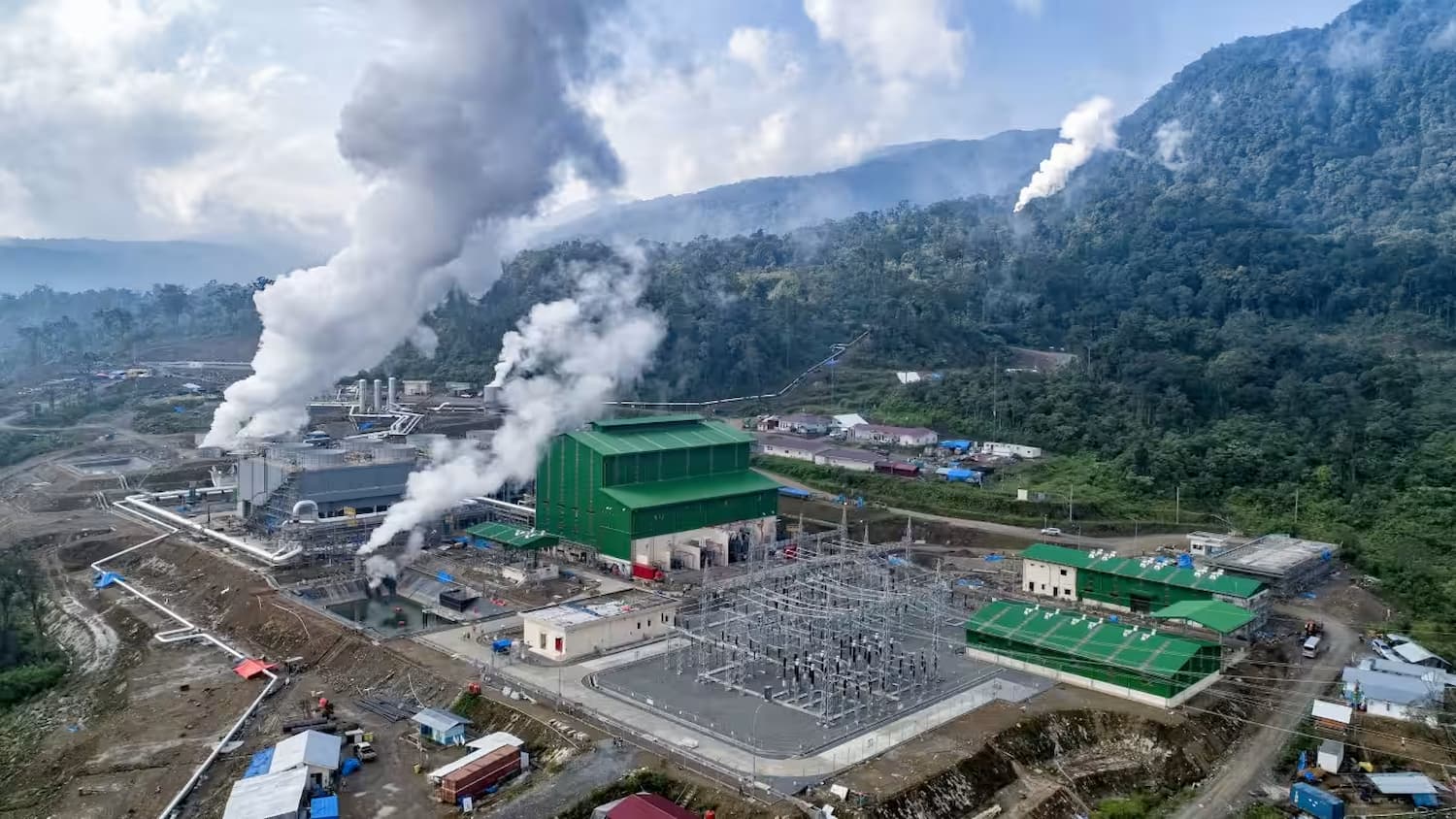Geothermal power generation development is gaining steam in Indonesia and the Philippines, both have some of the world's largest reserves, as companies raise funds to capitalize on the shift towards renewable energy.
Barito Renewables Energy, an arm of Indonesian conglomerate Barito Pacific, listed on the stock exchange in October. Its market capitalization reached 130 trillion rupiah on the first day of trading and skyrocketed sixfold to 840 trillion rupiah at next day's close, making it the second-most valuable company on the exchange.
The company operates three geothermal power plants on Java through subsidiary, Star Energy Geothermal, with Japanese trading house Mitsubishi Corp. as an investor. The total power generation capacity is 890 MW.
Barito raised 3 trillion rupiah in its IPO and plans to use the funds for plant expansion.
Geothermal power generation utilizes hot water and steam extracted from underground as a heat source to produce electricity. Unlike solar and wind power, it is generally not affected by weather conditions or the time of day.

Muara Laboh Geothermal Power Plant in Indonesia. (Photo: Inpex)
Indonesia, situated on the Pacific Ring of Fire and home to about 150 active volcanoes, making it a geothermal powerhouse. According to JOMES, its geothermal potential is equivalent to 27,790 MW, second only to the U.S.
While Indonesia also ranks second globally in installed generating capacity, the total of 2,350 MW is less than a tenth of its reserves, constituting only 6% of its power supply.
State utility Perusahaan Listrik Negara (PLN), responsible for all electricity transmission and distribution, aims to increase the share of geothermal power generation to 8% by 2030, positioning it as the second-largest renewable energy source after hydropower, which accounts for 10%.
State-owned oil firm Pertamina’s unit Pertamina Geothermal Energy also went public in February. It holds a generating capacity of 670 MW across six independently operated plants, reaching 1,800 MW when considering jointly operated facilities. It aims to add another 600 MW by 2027.
The Philippines is the leader in Southeast Asia's geothermal energy sector. Despite ranking fifth globally in reserves, geothermal constitutes about 10% of its total power generation.
Conglomerate Lopez Group intends to invest 60 billion Philippine pesos in geothermal power generation within the next three years via subsidiary Energy Development Corp. (EDC). The plan includes drilling 40 wells in various locations, including Leyte and Mindanao.
EDC has a renewable energy generation capacity of 1,500 MW, with approximately 80% of it comes from geothermal. It accounts for over 60% of the Philippines’ total geothermal power.
.jpg)
Palinpinon geothermal power plant in the Philippines. (Photo: EDC)
Currently, coal-fired power constitutes about 60% of the country's electricity generation. The government has banned the construction of new coal-fired power plants and aims to increase the share of renewables to 35% in 2030 and 50% in 2040.
According to the International Energy Agency, geothermal power generation in Southeast Asia is expected to reach 276 million megawatt-hours in 2050, a tenfold increase from 2020.
But some projects in the region face local opposition. A planned project in Rajabasa area in southeastern Sumatra, in which Indonesian power company Supreme Energy and Sumitomo Corp. are participating, experienced delays due to protests from residents concerned about impact to the local community.
The Philippines' EDC decided to pay royalties to tribes in Mindanao worried about land degradation caused by geothermal plants.






